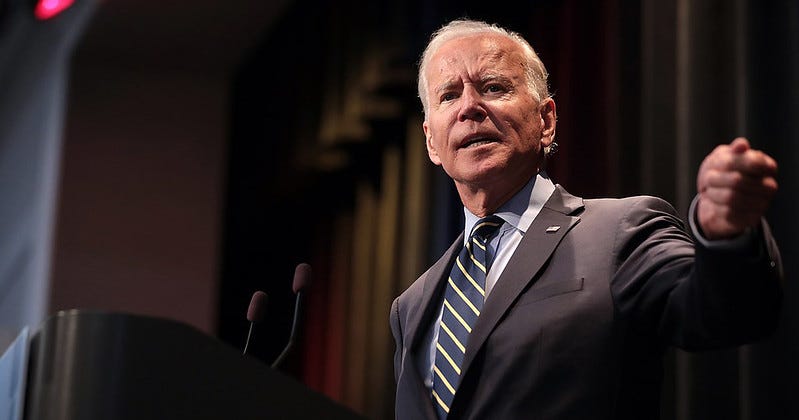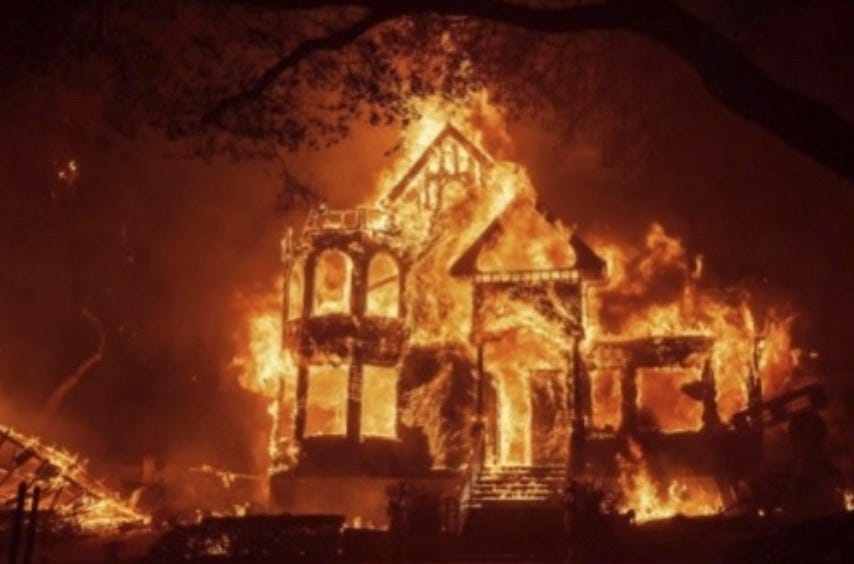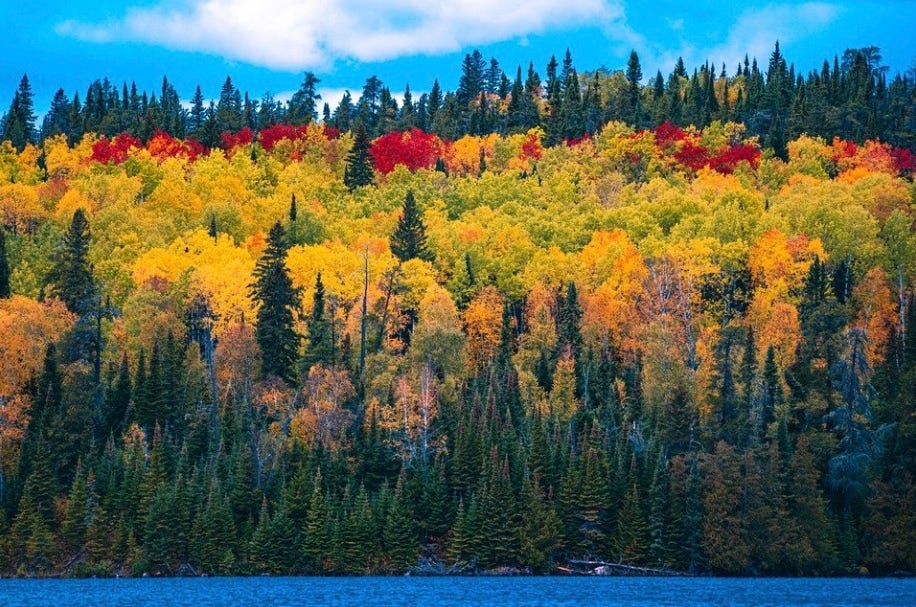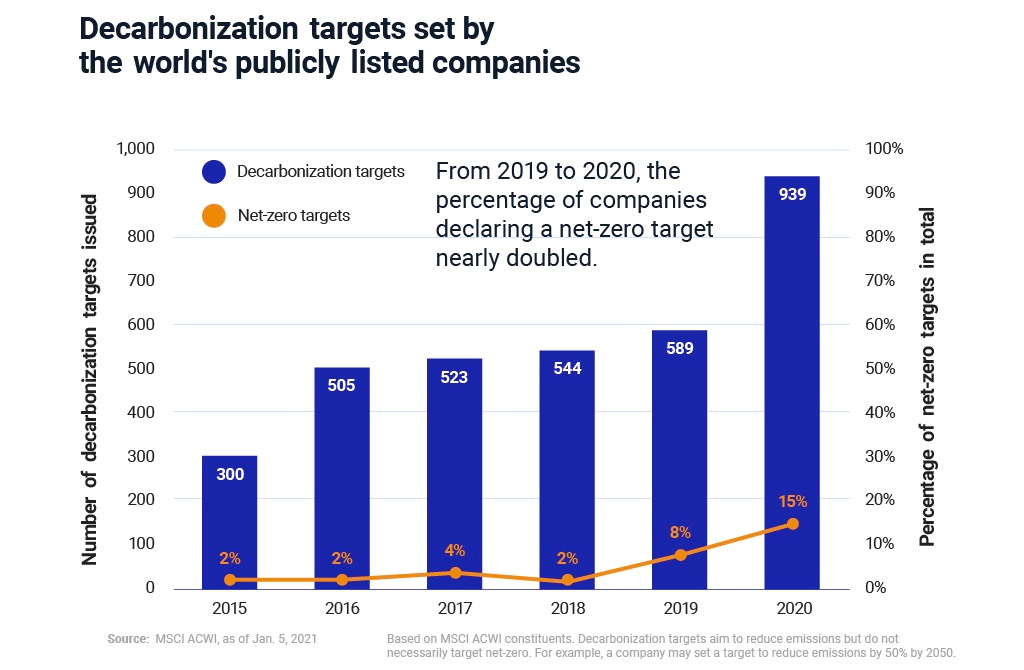Net zero pledges and the fire next door; plus Biden's COP26 army
Welcome to Callaway Climate Insights. Today is the 34th anniversary of the 1987 stock market crash. Just sayin'.
Callaway Climate Insights publishes Tuesdays and Thursdays for everybody. To get our insights and analysis every day, please subscribe.
I’m always struck by the stories warning the earth will run out of oxygen in a billion years, one of which made the rounds last week. That will be a bad quarter for someone’s business when that happens.
In the meantime, climate change is here now, and it’s impacting just about everybody’s financial performance. A new survey by Cervest, the British climate intelligence firm we’ve written about, reports that 88% of some 800 executives responsible for climate strategies in the U.S. and UK saw damage from flooding, heat or other climate disasters to their physical assets in the last five years.
The report, Cervest 2021 Climate Intelligence Outlook, calls into question whether the prevailing mid- to long-term strategy of getting to net zero carbon emissions over the next generation is as important as resilience planning for corporate assets right now, ahead of the next environmental assault.
“Decarbonization is essential, but insufficient to protect organizations and investors against the impact of climate change,” said Cervest CEO Iggy Bassi. “Resilience, developed from informed decisions on climate risk at an asset level, must be built into all businesses to protect future economic sustainability.”
Cervest is building a database that will allow users to more accurately predict out 20 or 30 years the impact of global warming on specific geographic areas, right down to individual addresses.
The near-term financial benefits of shoring up physical assets and supply chains now, such as lower insurance costs and debt-financing costs, are not being pursued aggressively enough, according to the survey, which said only about a third of executives believe their company needs to allocate more resources to managing climate risk.
Next quarter may seem a billion years away now. But it only takes one big disaster to suck the oxygen out of a rising stock trend.
More insights below. . . .
I’m speaking on a panel next Wednesday, Oct. 20, on the media and covering the climate emergency, presented by Dataminr, my favorite source of real-time information, along with climate editors from CNN and Accuweather, among others. Don’t miss it. Register here:
Covering the Climate Crisis: A Real Time Emergency | Live Webinar (dataminr.com)
Don’t forget to contact me directly if you have suggestions or ideas at dcallaway@callawayclimateinsights.com.
As climate change hits fall foliage season, money won’t grow on trees forever
. . . . The $3 billion fall foliage tourism industry is starting to sweat climate change, which is slipping back a calendar day in October every 10 years as hotter summers and more rain threaten the green derived from brilliant oranges and reds, writes Justin Sharon from New York. While that might seem manageable, for businesses who make most of their annual revenues over a few weeks of peak leaf-peeping, it’s a potential calamity, and another example of global warming’s ripple effects.
Tuesday’s subscriber insights: Biden’s bravado bashed by Xi Jinping’s COP26 absence

. . . . President Joe Biden is arriving at COP26 with an army of his cabinet officials. It looks likely, meanwhile, that China’s Xi Jinping won’t be attending. As the world’s second biggest polluter, the U.S. enthusiasm is crucial, but Beijing’s balking is likely to make the meeting toothless. But, hey, Biden is also talking to the pope about climate change, so everything will be OK. God willing. Read more about Biden’s entourage here. . . .
. . . . We called it last week — that a White House plan for offshore wind power all around the U.S. coast by 2030 was “pie in the sky.” And now proof: An already in-the-works project, New York’s Empire wind has announced it is going be pushed by nearly two years. An inside look at what is causing the delay – and will no doubt apply to other offshore projects. Read more here. . . .
. . . . If any company has money, it’s Google. Which means it can actually do something about climate change. And it is going further than its main rich-tech rivals. CEO Sundar Pichai’s insights into what they it is doing and what it’s realistic chances are of success may be an example to others. Read more here. . . .
. . . . The orphan renewables that could be the big winners. A top scientist at the National Renewable Energy Laboratory says geothermal is being ignored. Along with tidal, it has great potential and advantages that other renewables do not. It never stops producing and it does not scar the landscape or the sea. Read more here. . . .
Editor’s picks: High and dry at Lake Mead, Great Salt Lake; plus, factory farming raises pandemic risks


Environmentalists secure water rights for Great Salt Lake
In an effort to help the shrinking Great Salt Lake — at its lowest recorded level since 1847 — recover, a coalition of environmental groups have partnered with Rio Tinto Kennecott and the Central Utah Water Conservancy District in a first: securing water rights for the lake itself. The Associated Press reports that the donation of the water rights, about 21,000-acre feet of water, took years to secure. “Kennecott has a water right that’s currently in excess of our demands for our mining and industrial operations,” Ted Balling, Rio Tinto Kennecott’s senior adviser for water resources, said in an interview with FOX 13. “We’re able to donate this water right, let it go down the Jordan River out to Farmington Bay to benefit the wildlife and habitat out there.”
Is chicken production breeding the next pandemic?
Global attention is fixed on the origins of Covid-19, either in nature or from a laboratory, but eight or more variants of avian flu, all of which are able to infect and kill humans and are potentially more severe than Covid-19, now regularly rattle around the world’s factory farms barely noticed by governments, The Guardian reports. According to the report, it’s industrial chicken production that could very well be the source of the next global pandemic. The World Health Organization “suspects, but has no proof, that Covid-19 is linked to the intensive breeding of animals in south-east Asia’s many barely regulated wildlife farms. Major outbreaks over the past 30 years including Q fever in the Netherlands and highly pathogenic avian influenza outbreaks have been linked with intensive livestock farming,” The Guardian reports.
Data driven: Steps to net zero
As of July 2021, just 10% of the world’s publicly listed companies have aligned with global temperature goals, Jenna Ross writes in this special report from Visual Capitalist. “Preventing the worst effects of climate change will demand the largest economic transformation since the Industrial Revolution. Companies, investors and other capital-market participants can drive this change,” according to the report. In an expansive graphic, Visual Capitalist explains that a net-zero emissions target means reducing carbon emissions to the greatest extent possible, and compensating for the remaining unavoidable emissions via removal. It also sets out four key steps companies and investors can take to move toward their targets: define strategy, set target, implement changes and track and publish results.




